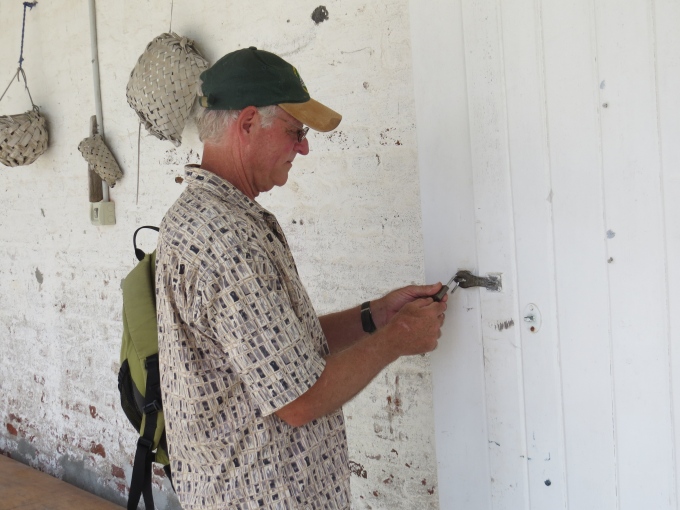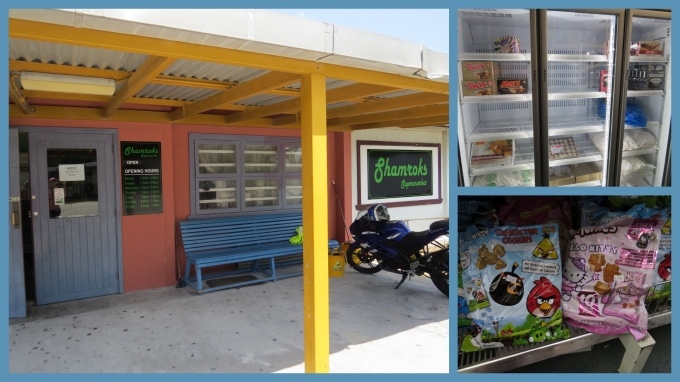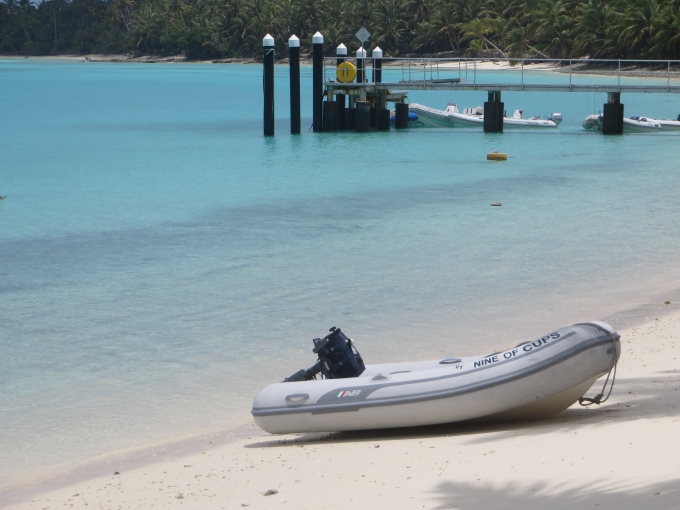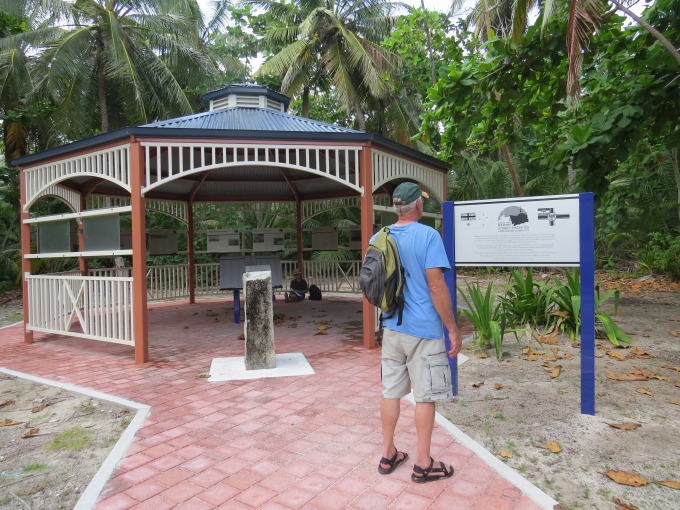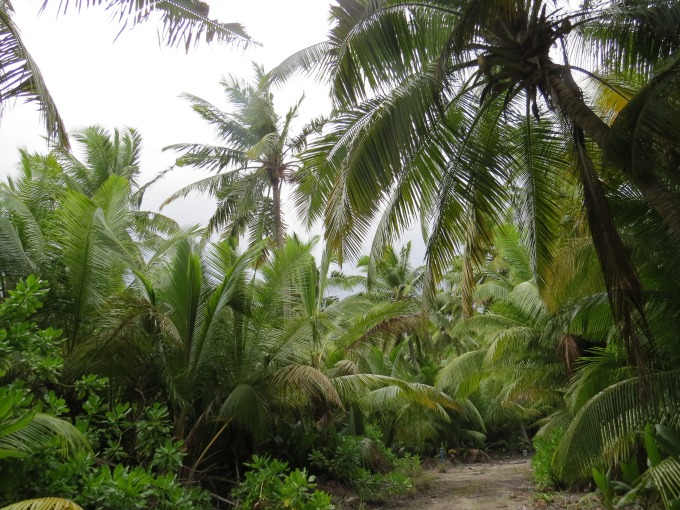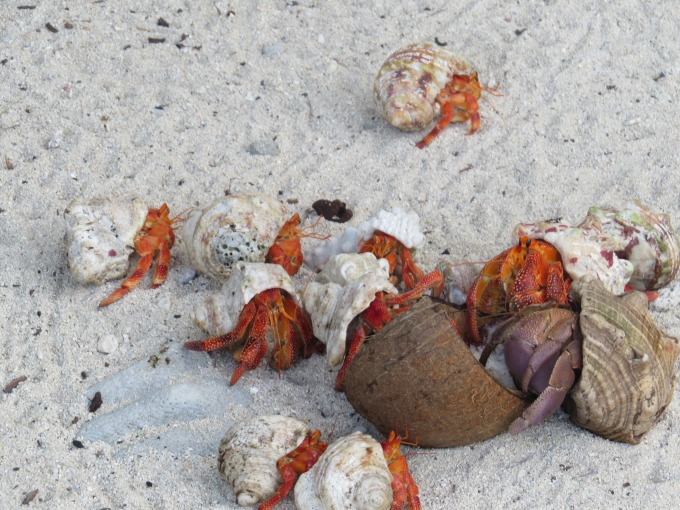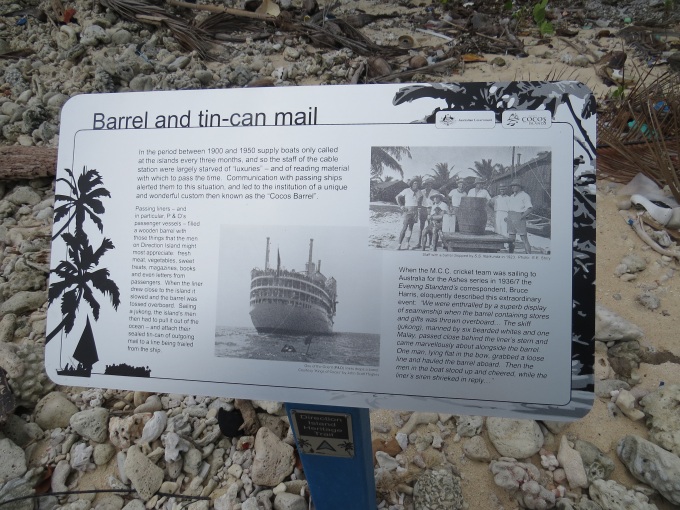A Dinghy Trip to Home Island
/Cocos Keeling Islands
The winds were down and the sun was bright as we dinghied across the lagoon to Home Island. We skirted around bommies in a zigzag pattern and finally connected with the channel into Home's little harbor. The shallow waters prevent supply ships from entering. We'd watched for two days in the outer anchorage while a ship had unloaded supplies with a crane onto a lighter and a barge and then reloaded empty containers.
We passed the ferry dock and jetty and beached the dinghy on the foreshore. We climbed up to the main road, a brick-paved, single lane thoroughfare which was perfect for the quads and motor bikes that everyone seemed to be driving here. As we approached the jetty, we saw the Welcome to Home Island sign and an info kiosk with an island map.
The map and several signposts directed us to the Shire Council's office. We needed to pay our anchoring fees to the shire … $50/week. Like many other small island communities we've visited, the pace was slow and things were laid back. That said, the payment process was computerized and they accepted credit cards. No complaints.
We had passed the island museum on the way in and inquired as to the opening hours.
“I'll give you the key”, said the young Cocos Malay woman. And just like that, we had access to the museum.
Housed in an old white-washed brick copra storage building, the museum was small, one large room, in fact, but it held some interesting items and provided some background information on the Cocos Malay population. I was particularly intrigued with shadow puppetry which is an entertainment art they're working to revive here. The Clunies-Ross family, the owners of the old copra plantation, did everything possible to maintain the isolation of their workers, forbidding fraternization with visitors or even use of communications. Having left their homeland generations before, much of their culture, including their language, has morphed into a unique Cocos Island culture and only recently have they had the opportunity to explore their roots.
We had also asked the shire office for a recommendation for lunch.
“It's Friday … nothing is open today for lunch”, she explained. “On Friday, we only work a half day and everything closes. You might try the supermarket for some fruit.”
Hmm … all restaurants closed on Fridays and evidently throughout the weekend, because why would anyone want to eat out over the weekend? This is island life. We headed to the tiny Shamrok Supermarket. Though there wasn't much in the way of freshies and the frozen food section was pretty empty, I was glad to see that civilization had indeed come to Cocos … there on the shelf were Hello Kitty and Angry Bird animal crackers. We passed on those in favor of a couple of apples for lunch.
We wandered along well-worn paths, past rows of pre-fab houses with antennas stuck on the roofs.
The Clunies-Ross family had built Oceania House during the heyday of the copra industry. The remains of the building still exist although a new Oceania House, which looks to be a luxurious place, is in the process of being built. The walls of the old estate are crumbling and little is left.
The cemetery was at the northern end of the island and we decided to dinghy north along the shore for a visit rather than walking. The graveyard was a beautiful, serene clearing, well-tended and cared for. Cocos Malay grave markers incorporate an Islamic motif on each grave. Many were draped with the traditional scarf worn by the women. Some had umbrellas and some tiny canopies to protect the graves from the sun and elements.
We also found the family burial site of the Clunies-Ross family dating from the mid-19th century.
The tide was low and we pushed and pulled the dinghy quite a ways offshore before finding enough water to set down the engine. We passed tiny Prison Island, the island to which Alexander Hare and his seraglio of women were relegated, and thought about a stop there, but the entrance was too shallow at the moment and decided to leave it till another day.
A 20-minute ride around those same coral heads and we were back at Cups, hot and dusty from our little excursion ashore. Once again, the turquoise blue water invited us to cool off and relax. A refreshing dip, a sundowner in the cockpit, dinner and a movie. Really … it doesn't get much better. It really doesn't.





